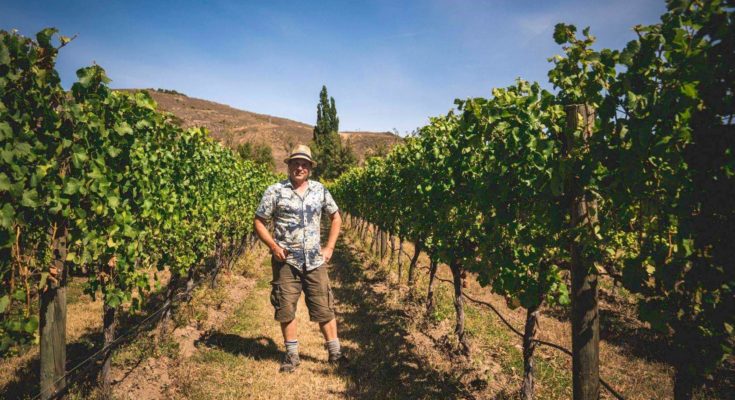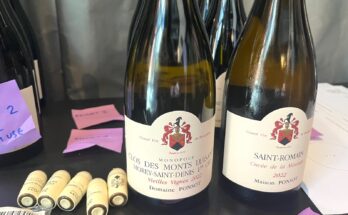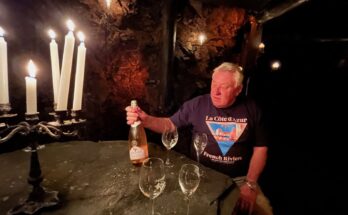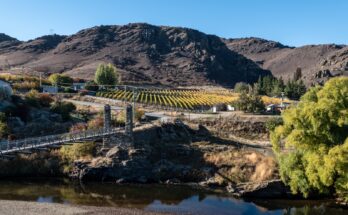A beautiful late summer afternoon in Bannockburn, WineFolio caught up with one of Central’s great characters – viticulture guru, Gary Crabbe. We stroll around the Bald Hills vineyard on Cornish Point Rd.
Tell me what this is all about – what are the keys things at play here? It really starts from all the soils. These soils were crushed by the glaciers and broken down and made into a fine powder. You can actually see that glacial powder in the lakes – it makes the blue colour – a glacial flour almost. We don’t have so much Quartz here (at Bald Hills vineyard) – that comes off the schist rocks and more prevalent along the Felton Road. This was an old river through here – and you can imagine the volume of water once the glaciers melted. But this is all wind-blown crushed-up glacial rock, blown down the lake.
All of Cromwell is sitting on a big piece of sand – that’s why it dries out, so you see Cromwell yellow and you go “it’s kind of rained?”. But the minute it dries out, it dries out really quickly; and it’s the same issue here. What we need to do here is put life into the soil in order to hold the moisture and to promote the roots to go and explore.
So my primary philosophy is – there’s biodynamics – but I believe in the soil food web and we test all the soils to look for the life in it. The microbes, the nematodes; we even dig up and count our earthworms and all the rest of it.
What we do is get a specific compost tea brewed by a lovely lady in Wanaka, and she will formulate the brew and we’ll spray this on in springtime, to help explore the soils. All the goodies and microbes will get in there and down underneath. That will help the plants become more efficient and it will help raise the organic matter in the soil.
That’s the first step. Then we add lots of fish and lots of food for it, because the biological life loves fish. That’s a great food for them. And we use molasses too, surprisingly.
And seaweed too? Seaweed I generally do foliar. Every spray I’ll put some seaweed on it, and it just gets a little, but often. You can’t dump stuff on, because it just won’t hold – just washes through. Little and often. Every time we go for a foliar spray, we just put a little seaweed on, and continuously do that. We go through 300 litres. That’s the idea to keep the leaves healthy, but I’ve really got to get to that soil – get the life in the soil.
There have been a lot of innovators here. Felton Road was an innovator, and there’s a big network of organic growers and we work collectively. Talk about soils, cover crops and how we can grow without chemical inputs. That’s what we’ve been stressing.
All we can do is keep lifting our game as best possible. There’s a sense that we expect higher and higher standards and we’re sharing amongst each other. I don’t see anyone else as competition – the only competition is to make a better wine.
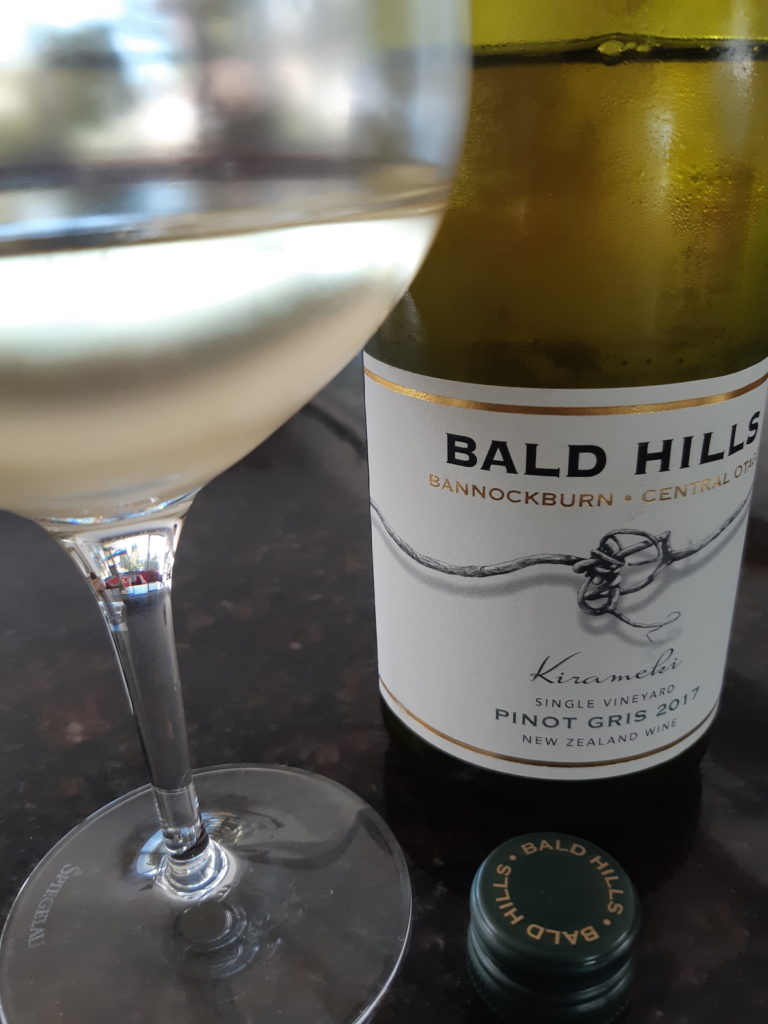
We can run out of water here – when it’s high 30s we actually don’t quite have enough water. We’re getting a little bit more from the council, but we’re right at the edge of what we’re able to do. So if I can get something in the soil to help the water holding capacity then I don’t need to water as much; it becomes more efficient for the vines. It’s a long term plan what we’re trying to achieve.
But what we also do is we have an under-vine weeding system. What it is, is there’s a slasher that comes and cuts underneath, and basically gets the majority of the weeds. A big problem is lucerne – this used to be planted in it. We can get to the mallow, but if you don’t get every lucerne root, it comes back again. But it does help fix nitrogen, so it’s a double-edged sword. It steals your water, but it gives you a bit of nitrogen.

What do you think Climate Change has in store for us? We’re pushing ten days earlier I would think and I’ve been here since the 90s. It’s helping some of the cooler regions; but in 2018 when we had that intense heat we had the same GGDs as Hawke’s bay. We harvested 3.5 weeks earlier. I fear if we have another year like that – we’ll have Hawke’s Bay Pinot. It’ll be lighter in colour, didn’t have the intensity that the cooler years have. ’15 was a cool year – excellent – ’17 the same. It used to be the hot years were the great years! Especially in the evenings there seems to be more heat, retained, and that’s degrading our assets and our aromatic profile. That’s a real concern. I do live in Gibbston – so maybe that’s the right spot (just kidding).
I can adjust the amount of leaf cover on. If we have a hot year like that, I’m going to leave more leaves on. It’s a minor thing we can do. It worries me. The amount of water is finite. If I can get the soils in a good condition then I can use less water. I try to increase the carbon content of the soil because the soil is the best sink of carbon. If you are continuously growing and taking carbon out of the system and putting them into the leaves, then you’ve got to put carbon back into the system. The soil is the best carbon sink you can get.
We’re getting close to nets – normally we’d be netted by now. We’re two weeks behind this season. We have this heat now, but we had a very cool December and early January. Not massive bunches – this is quite small for us but then I’m hoping that this year there will be some intensity in that.
Is Central Otago Pinot now it’s own thing – has it come of age? We’ll never be Burgundy. It used to be considered the benchmark and that’s where you’re going to set your standard by. But it’s not – it’s different. And the price should be based upon quality. I was over in Burgundy recently and it was so different that I couldn’t feel it was in competition. We had a lot to learn, from an organic profile, marketing ideas and all the rest of it. But we’re in a different game. There was harvesting in thunderstorms – the hand sorting of berries was amazing. They do have a lot to teach us, I believe. The sorting they do within the winery was quite extraordinary.
I like the idea of letting the guys pick in the field – come 2.30 the days over and let’s go to the winery – we’re going to hand sort everything. I’ve got a friend Michel Mallard – he’s got a family winery in the Corton area – and they go through all the pickers – then it goes to the winemaker, and then it goes to the father. And the last, before it comes off the end of the conveyor belt – is the grandfather! That’s quality control! And it’s a connection.
At Bald Hills we’ve got Japanese owners, and they don’t see things as a quick profit in this generation. They look at four generations down the line, and getting the right people.
They give me a pretty good sense of freedom as long as I win them trophies!

